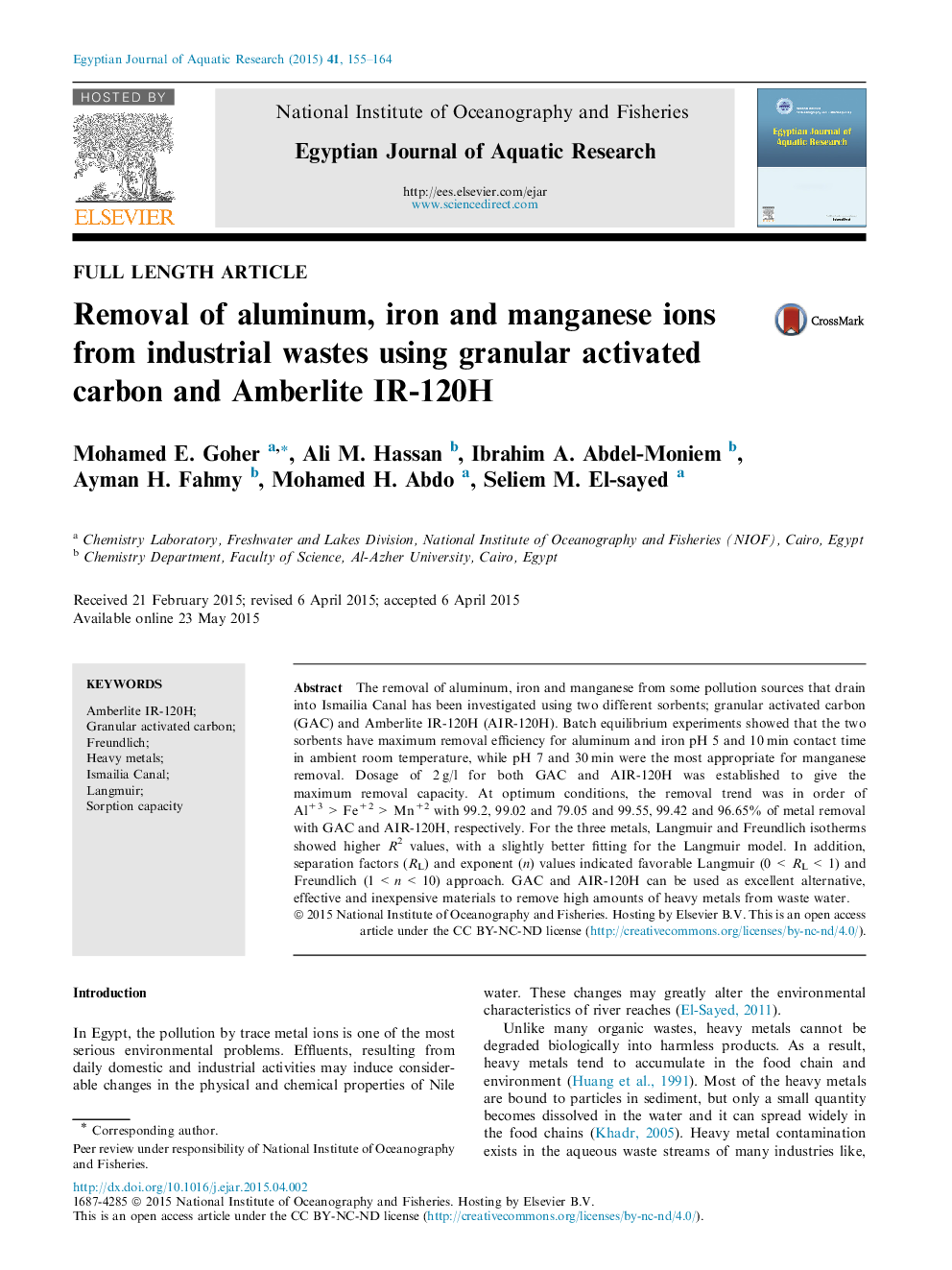| Article ID | Journal | Published Year | Pages | File Type |
|---|---|---|---|---|
| 4493076 | The Egyptian Journal of Aquatic Research | 2015 | 10 Pages |
The removal of aluminum, iron and manganese from some pollution sources that drain into Ismailia Canal has been investigated using two different sorbents; granular activated carbon (GAC) and Amberlite IR-120H (AIR-120H). Batch equilibrium experiments showed that the two sorbents have maximum removal efficiency for aluminum and iron pH 5 and 10 min contact time in ambient room temperature, while pH 7 and 30 min were the most appropriate for manganese removal. Dosage of 2 g/l for both GAC and AIR-120H was established to give the maximum removal capacity. At optimum conditions, the removal trend was in order of Al+3 > Fe+2 > Mn+2 with 99.2, 99.02 and 79.05 and 99.55, 99.42 and 96.65% of metal removal with GAC and AIR-120H, respectively. For the three metals, Langmuir and Freundlich isotherms showed higher R2 values, with a slightly better fitting for the Langmuir model. In addition, separation factors (RL) and exponent (n) values indicated favorable Langmuir (0 < RL < 1) and Freundlich (1 < n < 10) approach. GAC and AIR-120H can be used as excellent alternative, effective and inexpensive materials to remove high amounts of heavy metals from waste water.
